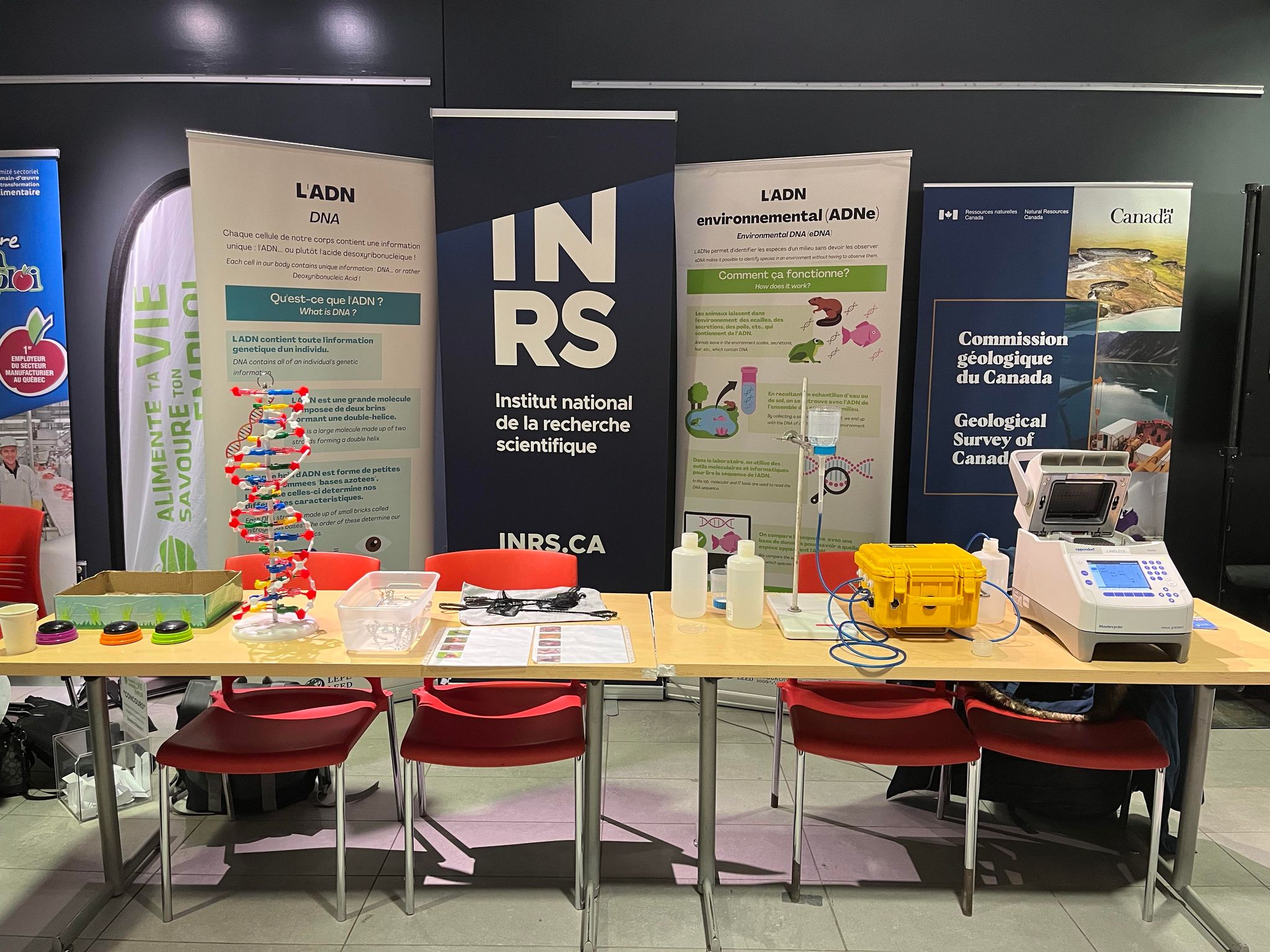All living organisms—whether fish, insects, or plants—leave traces of their DNA in the environment. This DNA ends up in water, soil, air, or snow through dead cells, waste, or mucus. Scientists call it “environmental DNA,” or eDNA. By collecting a simple water or soil sample, researchers can detect which species are present without needing to see or capture them.

Why it matters
eDNA is a powerful, non-destructive way to monitor biodiversity. It allows us to detect rare, invasive, or culturally important species quickly, accurately, and at low cost. For example, one bottle of lake water might reveal the presence of endangered fish, harmful invasive species, or even animals that are important for Indigenous communities. This information helps us make better decisions about how to protect nature.
A tool for the future
As climate change and human development put pressure on ecosystems, tools like eDNA are becoming essential. Communities, governments, and industries are now using eDNA to track species, guide conservation, and issue permits for new projects. But to fully benefit from this tool, we need standardized methods and shared resources—so that the data is reliable, accessible, and ready to support informed decision-making.